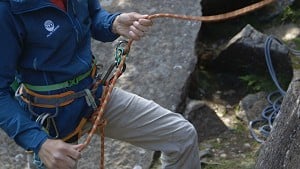
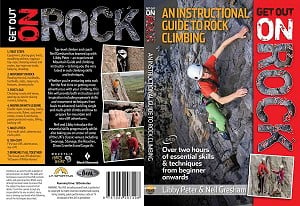
Get Out On Rock is a collaboration between Neil Gresham (top-level climber and Britain foremost coach) and Libby Peter (experienced Mountain Guide and climbing Instructor). It brings you the very latest in rock climbing skills and techniques and provides instruction and inspiration whether you're venturing onto rock for the first time or getting more adventurous with your climbing.
The DVD is available from: Libby Peter's Website
Rigging a safe top rope is an important skill for climbers to learn, especially those new to the sport. You may not have invested in a full lead rack yet, you might fancy having a go on something you're not up to leading or you may just want to set up a rope for your kids. Whatever the scenario the systems are the same and we'll take you through them here.
Top top-rope or bottom top-rope?!
Lets be clear what we're talking about here, a top-rope is any system that you set up by nipping round to the top of the climb without having first lead it. You can rig it so you belay from the top of the crag (top-rope) or suspend the climbing rope from a set of anchors at the top but belay from the base of the climb (a bottom-rope). Confusingly, both are top-ropes! Here, I'll refer to top- ropes (belay at the top) and bottom-ropes (belay at the bottom)
If lots of folk want a go on a particular climb or you want repeated tries so may be falling and lowering repeatedly a bottom-rope is best. If the pitch is longer than half your rope length, the anchors are a long way back from the edge, the crag top is loose or sharp a top-rope is better.
How to rig a bottom rope
Pick your climb then work out a landmark so you'll locate it once at the top of the crag. This done you need to find two or three bombproof anchors that are appropriately located in line with the climb, avoid cams and small wires where possible. In this other UKC article we looked at various methods of how to equalise anchors with slings and this system will work if the anchors are close to the crag edge. If the best anchors are quite a way back from the edge then using a separate length of rigging rope (first choice would be static or pre-stretched rope) will make life much easier.
Take a look at this video clip to see a rigging rope being used at a gritstone crag:
VIDEO: First Steps, Rigging a top rope:
Linking three anchors can be a bit baffling, here's a simple method:
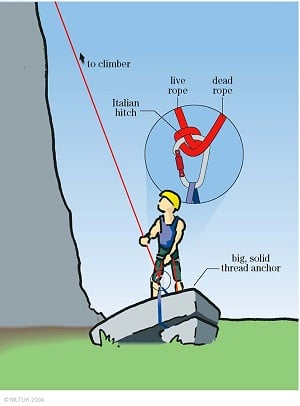
Once your bottom rope is rigged give the climbing rope a pull from below to take out any slack then slide the rope back and forth to check it runs smoothly and isn't catching or rubbing on the edge of the crag.
HEALTH WARNING: loaded moving ropes can be damaged very easily on sharp or rough edges so you must be absolutely certain there's no serious abrasion going on.
Which belay device?
You can use your standard belay device or a grigri type self-locking device either system works well just make sure it's compatible with rope's diameter and you know how to operate the device. Use what you're familiar with rather than suddenly experiment with something new.
Direct belay
You may consider belaying directly from a ground anchor if the belayer is light or there is a considerable weight difference between climber and belayer. Obviously the anchors must be 150% bombproof (threads work really well here) and you must be able to stand right next to the anchor to operate it safely. DON'T use a standard belay device here as it difficult to ensure you can lock it off effectively. An Italian hitch works best for this as shown in this diagram on the right.
Lowering
Take the rope in tight and hold the belay device locked off until you have the climbers full weight (there's always some alarming rope stretch), check the climber is ready then lower aiming to be smooth, slow and steady. If the climber is light keeping one hand above the device and one below feels plenty secure enough (shown in the left-hand photo below).
But if the weight of the climber is harder to hold brace yourself against their weight , if you're worried about being lifted off the ground clip into a ground anchor and use two hands below the belay device as shown in the diagram below and on the right:
How to rig a top-rope
As I said before sometimes the crag doesn't lend itself to bottom-roping or it may suit the climber to finish on top of the crag. Little children prefer to climb up to someone and often hate being lowered or are too light to be lowered off easily.
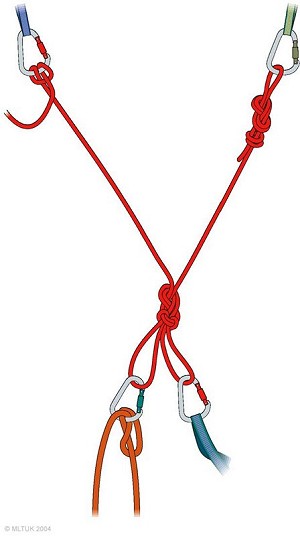
Or use your standard belay device as shown in the photo below:
And Finally
Don't hog the best routes with your top-rope (some climbers get annoyed with teams who aren't leading). If someone wants to lead the climb you're on offer to move out the way for a while, it'll make for a happier day for all at the crag.

- VIDEO: How to Protect Traverses 24 May, 2010
- VIDEO: Double ropes ? what, when, why, where and how! 5 May, 2010
- Surviving Sea-cliff Adventures 8 Apr, 2010
- VIDEO: How to rig an abseil 1 Apr, 2010
- VIDEO: How to equalise anchors at a belay 12 Mar, 2010

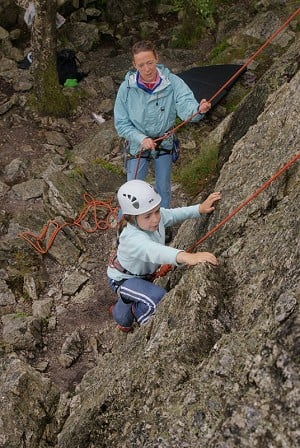
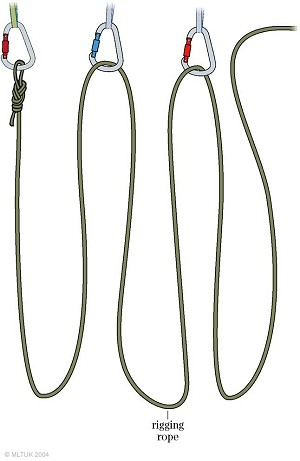
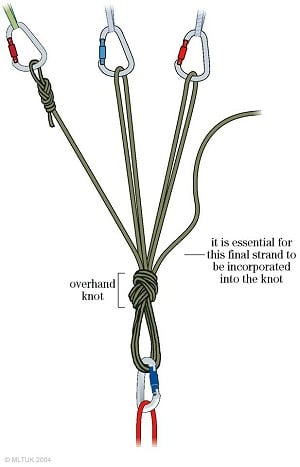

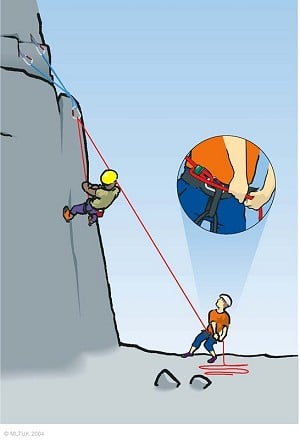
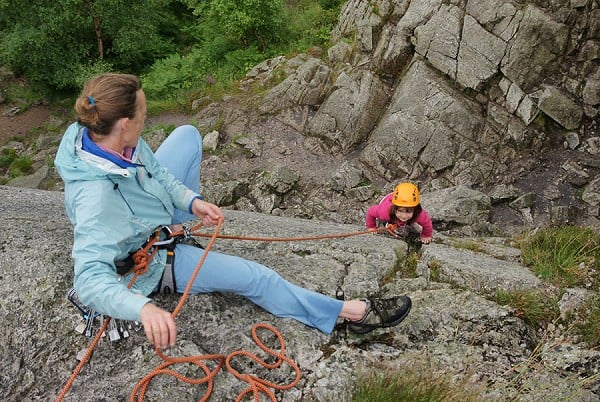
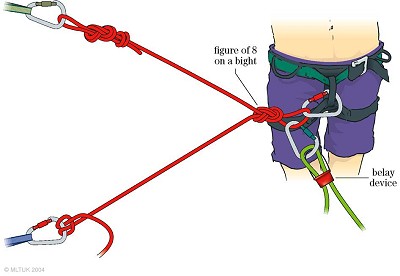











Comments